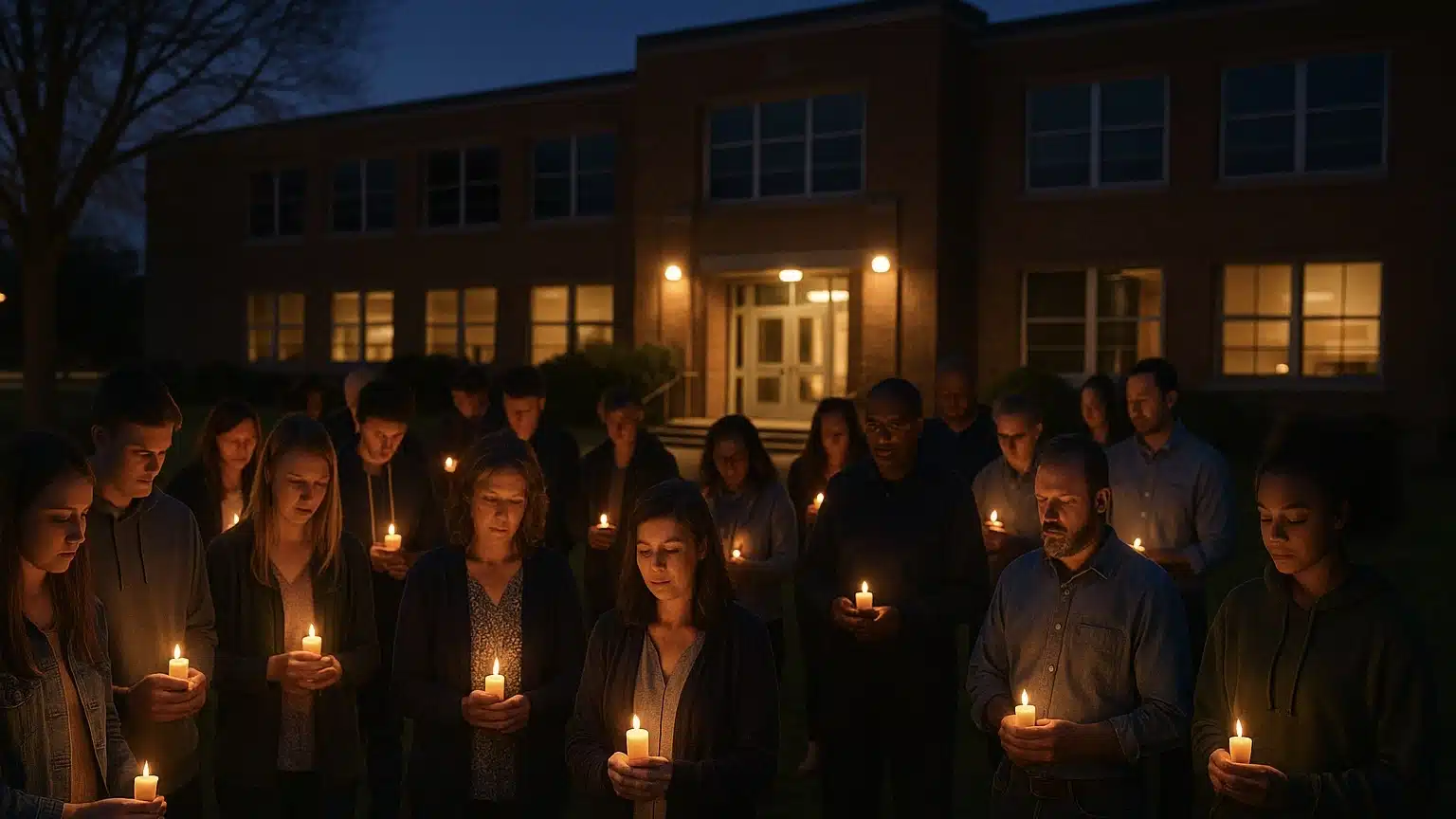Despite the billions spent on security and prevention programs across the country, gun violence on school campuses has never been higher than in recent years. Every school shooting adds to the complexity of school safety and security; they’re part of a larger pattern of mass shootings in the United States, where firearm-related tragedies are happening in every corner of the country.
Over 330 shootings took place at American schools in 2024, affecting hundreds of thousands of students, teachers, and families nationwide.
This report provides an overview of school shootings in 2024, looks at specific incidents and the impacts they had, examines current safety measures, and provides evidence-based prevention strategies communities can use to keep their schools and students safe.
2024 School Shootings in Numbers
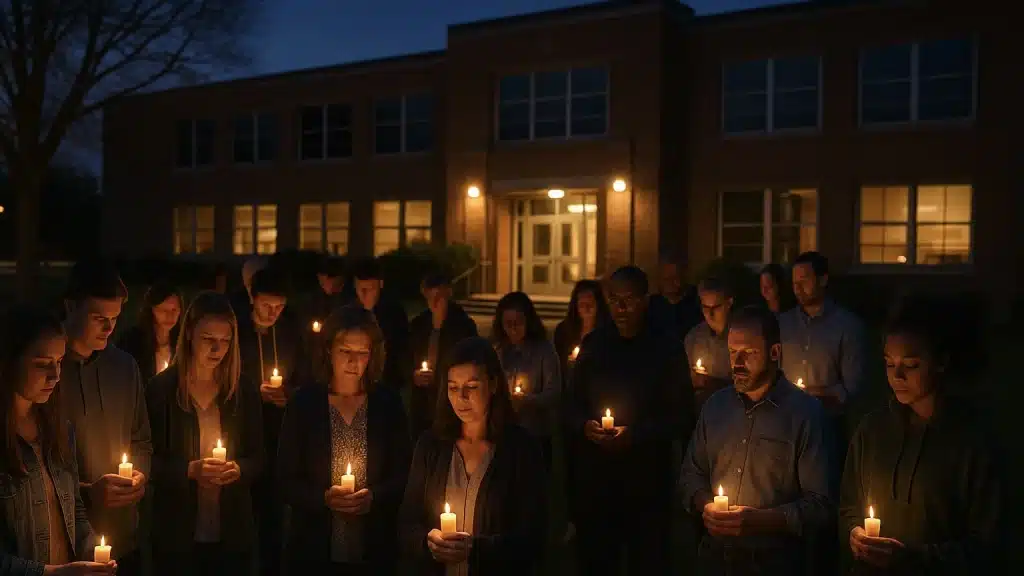
The K-12 School Shooting Database recorded 336 total school shooting incidents in 2024, the second highest yearly count, behind 2023 only. This is the most comprehensive count of gun violence in schools, as it includes all gun violence on school property, no matter the number of victims or time of day.
Conflicting Statistics caused by the Lack of a “Mass Shooting” Definition
When it comes to counting school shootings, the numbers differ from organization to organization. This is because there is no universal definition of a mass shooting. The differences in what federal, state, non-profit, research, and reporting organizations consider a mass shooting (usually based on the number and type of victims required, or the use of the firearm) have resulted in some sources reporting far fewer incidents than others.
Below are other prominent sources, their criteria for counting an incident as a “school shooting”, and their total number of school shootings for 2024:
- Everytown for Gun Safety (any incident where a firearm is discharged on school property): 228
- CNN’s school shootings database (an incident resulting in at least one person shot): 83
- Mother Jones (an incident resulting in three or more deaths): 1
The inconsistency across organizations can be confusing and frustrating for the public and some argue that more conservative criteria underreport the problem of gun violence in American Schools.
When, Where, and Why School Shootings Happened
There was at least one school shooting every month in 2024. They happened across multiple states and affected a variety of schools, including elementary, middle, and high schools, religious schools, magnet schools, and technical schools. Data shows that over two thirds of the shootings happened outside on school campuses, in parking lots and in front of schools, and many happened during high-activity times, like arrival, lunch, and dismissal. Some incidents even happened outside of school hours, such as at sports games and spirit nights.
Most on-campus shootings in 2024 started as fights or disputes that escalated to gunfire; fewer were premeditated attacks. This pattern suggests that conflict resolution and de-escalation training should be part of school shooting prevention strategies.
Impact Assessment of School Gun Violence in 2024
There were 276 victims of gun violence on school property in 2024… a 715% increase over the 20 years leading up to 2024, according to K-12 Dive.
We can’t measure the full extent of how school shootings affect entire communities. Beyond the physical harm and financial costs, research shows exposure to school violence leads to increased rates of PTSD, chronic anxiety, and depression in students, staff, and families. Long-term effects include:
- Chronic absenteeism and distraction that can impact student achievement.
- Economic hardship for families dealing with trauma and medical bills.
- Ongoing legal proceedings that can prolong community healing.
- Changes to school culture and daily operations.
The impacts of school shootings on kids, educators, families, and communities emphasize the need to take preventative measures to reduce gun violence in schools.
Geographic Distribution and Patterns of K-12 School Shooting Incidents
School shooting incidents, including those that targeted the school and those that occurred on school property but not with the intent of a mass shooting, happened in almost every state in 2024. Their frequency varied by population density and region. States with the highest student exposure rates (per 100,000 students) from 2020-2024 were:
- Delaware, 359
- Washington, D.C., 356
- Utah, 166
- Arkansas, 130
- Nevada, 127
Small states like Delaware can have higher per-capita rates (even though they had fewer incidents than other states) because they have smaller overall school populations, and one shooting can impact statewide stats. Urban areas have more incidents because they have more people, but rural school shootings are a reminder that they can and do happen anywhere.
Notable School Shootings in 2024
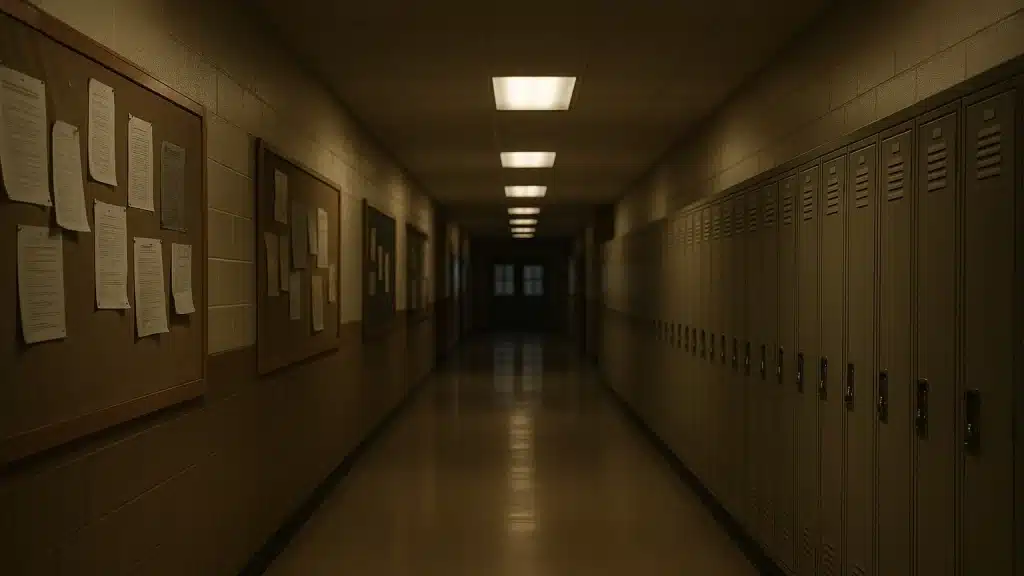
Only one 2024 school shooting, the Apalachee High School Shooting, met the narrowest definition of a “mass shooting” used by much of the federal government, which only counts incidents where three or more people are killed (also considered “mass murder” with a firearm). Several shootings in 2024 did, however, result in the deaths and injuries of students, school staff, and community members. Each incident gives us a glimpse into the changing landscape of school violence.
Perry High School, Iowa (January 4)
Early in the year, a 17-year-old student opened fire at Perry High School in Iowa with a shotgun and small-caliber handgun. A 6th grader and, later, the school’s principal were killed in the attack, and 6 others were injured. The shooter also died of a self-inflicted gunshot wound.
The Perry High School incident highlights the challenges faced by smaller school districts where limited resources can impact security infrastructure and emergency response capabilities; in these situations, having a police officer or school resource officer (SRO) on campus can be a critical part of the initial response. A quick police response limited the number of casualties at Perry, but the incident started national conversations about school safety in smaller communities.
Benjamin E. Mays High School, Georgia (February 14)
In February, a shooting at Benjamin E. Mays High School in Atlanta left four students shot and injured in the parking lot following the escalation of a fight. This event emphasized the need for targeted interventions addressing student conflicts and community safety. This was also one of multiple school shootings in Georgia in 2024, showing the importance of comprehensive prevention and response strategies in affected areas.
Apalachee High School, Georgia (September 4)
The September 4th shooting at Apalachee High School resulted in four deaths, including two students and two teachers, and left nine more injured. This attack continued conversations about accountability, as both the 14-year-old shooter and the shooter’s father were charged for the attack. This is one of several recent cases where the shooter’s parent(s) have been held accountable, commonly as a result of the firearm’s accessibility to the shooter.
This attack also served as a reminder that many shooters share their plans or express concerning sentiments to others before their attack. The shooter in this incident was interviewed by police a year before the attack due to posts they made online threatening a school shooting. This eerie trend emphasizes how critical early intervention and anonymous tipping can be.
Abundant Life Christian School, Wisconsin (December 16)
Wisconsin experienced one of its most severe school shootings in December of 2024 at Abundant Life Christian School, where two people were killed and six more were injured. In addition, the shooter died of a self-inflicted gunshot wound. This incident, one of multiple incidents in the past decade, has exposed gaps in security protocols that often occur at private religious institutions in the U.S..
Security Measures in K-12 Schools
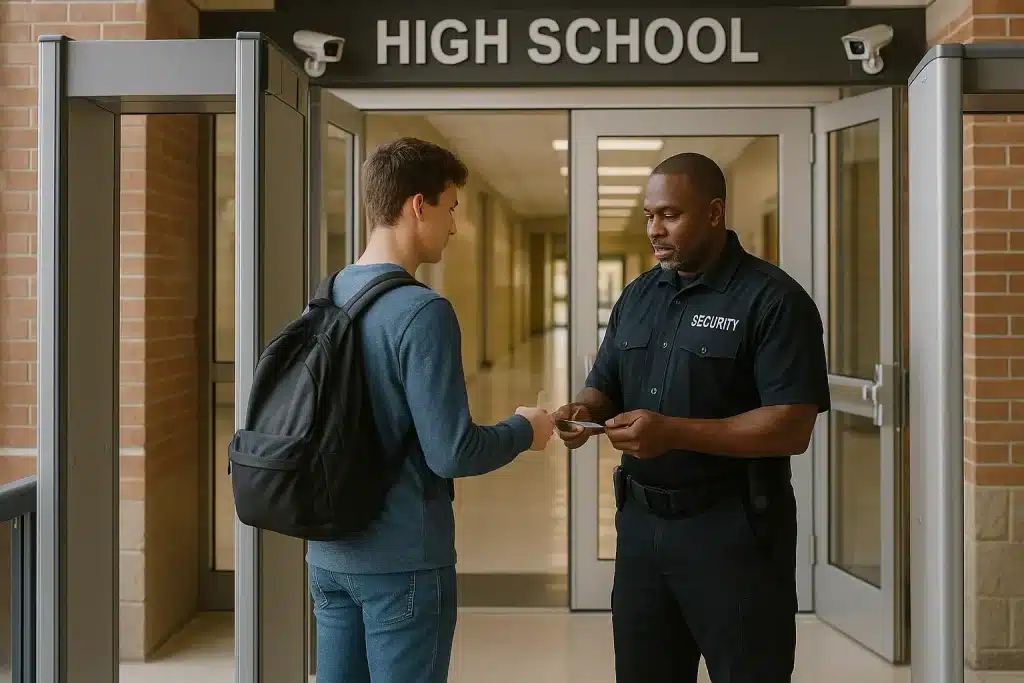
Many schools have invested heavily in security infrastructure, implementing AI-enhanced camera systems, metal detectors, upgraded locks, and barrier systems. They have also worked to routinely employ school resource officers (SROs) and maintain communication channels with police for high-risk events. Unfortunately, there is often a gap in school security measures due to differences in district budgets, perceived need, and maintenance difficulties.
The high number of shooting incidents that occurred on school property in 2024 has led to a push for increased security measures in schools. For example, following the Perry High School shooting in Iowa, parents have advocated for the school board to implement additional preventative measures, which could include metal detectors at entryways, limiting entry points into buildings, and creating hall monitor positions. After the Apalachee High School Shooting, metal detector wands were suggested due to their relative affordability, along with improving mental health care. Additionally, the shooting at Abundant Life Christian School has raised questions about the lack of school resource officers in many private schools.
Shift Toward Prevention-Focused Strategies
In addition to physical security, there has been a push for other prevention-focused measures, often suggested following an instance of gun violence on school property.
- Mental Health Support: After two major school shootings in a year, Georgia’s Speaker of the House, Jon Burns, is advocating for improving mental health resources for the state’s students. Events like these reveal weaknesses in the nation’s mental health services; poor access to mental healthcare can contribute to higher rates of violence, and victimization from violence can contribute to the increased need for services. Districts across the country are hiring more counselors and mental health specialists to provide direct support to students experiencing emotional distress or behavioral challenges.
- Social-Emotional Learning: Many schools are adopting this curriculum to reduce alienation, improve conflict resolution skills, and help students develop healthy coping mechanisms for stress and interpersonal challenges. This proactive approach is evidence-based and can lead to better academic performance, student behavior, and overall well-being.
- Threat Assessment Programs: The Apalachee shooting, where the shooter was involved in a previous investigation due to comments made online a year before the attack, has led to conversations about having mandatory threat assessment teams in schools. These multidisciplinary teams evaluate concerning student behavior, intervene early, and connect at-risk students to support services before violence occurs. Early evaluations show lower rates of violent escalation in districts with robust threat assessment programs. Threat assessment programs must be carefully put together to prevent the profiling of students of color, who may be disproportionately targeted.
- Community Engagement and Training: Addressing gun violence in schools requires action outside of schools, too. Addressing violence in the community and creating pathways to safety are essential to promoting an environment where students feel cared for and capable of asking for help when needed. This includes:
- Creating a culture of gun safety
- Creating Community Safety Plans
- Establishing Community Violence Intervention Programs
Research shows that effective school violence prevention requires a multi-layered approach combining security measures with proactive interventions that address root causes. The most promising strategies focus on identifying and supporting at-risk students before they reach a crisis point.
Open communication and parental involvement in school safety initiatives are essential. Engaging parents alongside students and staff helps identify warning signs early and supports prevention efforts.
Current and Future Trends
The 336 school shootings recorded in 2024 are part of a larger crisis that has developed over the past few decades. As of October 2025, there are fewer school shootings than there were in 2024. The K-12 School Shooting Database’s count lists 206 shootings so far this year. Other sources, each utilizing different tracking criteria, report more conservative numbers*:
- Everytown for Gun Safety: 141
- CNN school shootings database: 53
- Education Week: 13
- Mother Jones: 0
These major differences serve, once again, as a reminder that inconsistencies in the definition of a mass shooting can and do impact school shooting statistics, and can make it difficult for students, parents, administrators, and lawmakers to grasp the scope of gun violence in K-12 schools fully.
It’s unclear how the rest of the year will turn out, but it can be hoped that the decline in school shootings from 2023 to 2024 continues to form a trend.
*Figures are from 27 October 2025.
The Path Forward
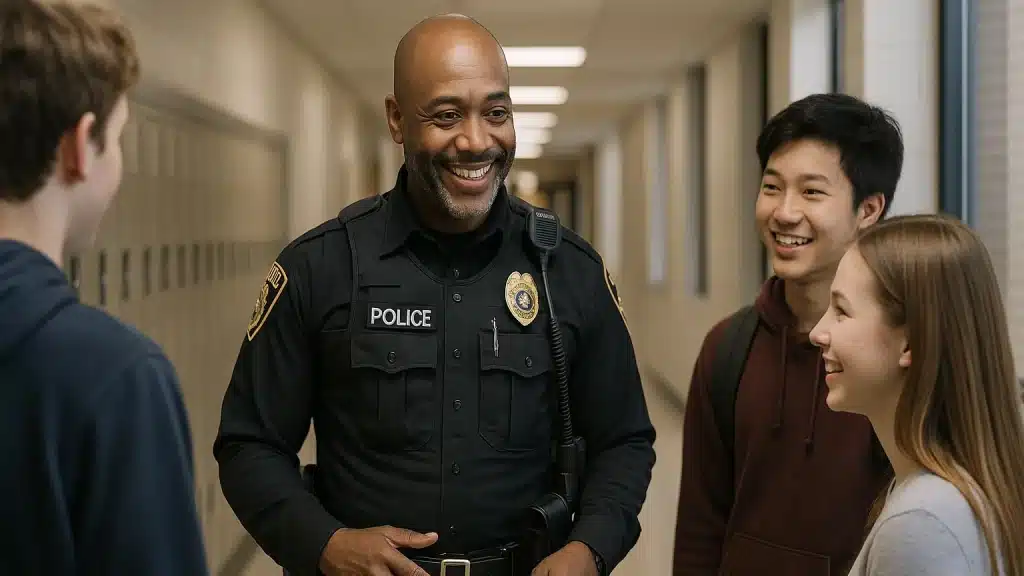
Ultimately, gun violence in schools must be ended to create the safest, most comfortable learning environment for children. To get to a point where there are no shootings at all, communities, policymakers, and educators must all work together to develop strategies and policies to make schools safer.
The 2024 shootings show that traditional security measures need to be paired with prevention and community-based approaches to address the root causes of school violence. The most promising prevention strategies are early identification and intervention, robust mental health support, and community-wide approaches that address risks before they can escalate to violence. Many schools that have already started to implement comprehensive threat assessment programs and expand mental health services are seeing positive results in reducing violent incidents and overall student distress.
As school districts face budget constraints, keeping these prevention-focused investments will require community-wide commitment to creating environments where students feel supported, connected, and mentally healthy. We must not just respond better to these tragedies, but prevent them from happening in the first place. How have things evolved in 2025? Take a look at our article covering 2025 school shootings.
Frequently Asked Questions
How many school shootings were there in 2024?
There were a total of 336 incidents recorded by the K-12 School Shooting Database in 2024. This was the second-highest number of school shootings on record.
What counts as a school shooting?
There isn’t a singular definition or set of criteria widely used for “school shootings” in the United States. Some databases count all gun violence on school campuses as school shootings, and others only count incidents based on the number of victims that were killed and/or injured. Because many organizations have different definitions, school shooting data vary greatly.
Which states had the most school shootings in 2024?
Incidents happened across in almost every state, but some states had more school shootings than others. States with the most incidents in 2024 were Texas, California, and Georgia. Despite this, other states, including Delaware, Washington, D.C., Utah, Arkansas, and Nevada, had higher student exposure rates due to differences in population distribution.
How can gun violence in schools be prevented?
To prevent school shootings and gun violence in schools, a comprehensive approach is needed. This means that both preventative measures that address the root causes of violence and physical security measures that enhance incident responses should be used together. Providing mental health support, threat assessment programs, and early intervention strategies can be especially beneficial for lowering the risks of violence in schools. Additionally, security measures like AI-enhanced security cameras and School Resource Officers (SROs) trained to de-escalate can be highly beneficial.
Data Sources:
- Arundel, K. (2025). School shootings in 2024 fell just below prior year’s record high.
- Everytown for Gun Safety. (2025). Gunfire on School Grounds in the United States.
- Leeds Matthews, A., O’Kruk, A., and Choi, A. (2025). School shootings in the US: Fast facts.
- Marks, N. (2025). Interactive map of school shootings.
- Maxwell, L., et al. (2024). School Shootings in 2024: How Many and Where.
- Omnilert. (2025). 2024 Gun Violence Statistics.
- Panchal, N. and Zitter, A. (2025). Examining School Shootings at the National and State Level and Mental Health Implications.
- Riedman, D. (2025). How Many School Shootings? All Incidents From 1966-Present.
- The White House. (2025). The Cumulative Costs of Gun Violence on Students and Schools.
